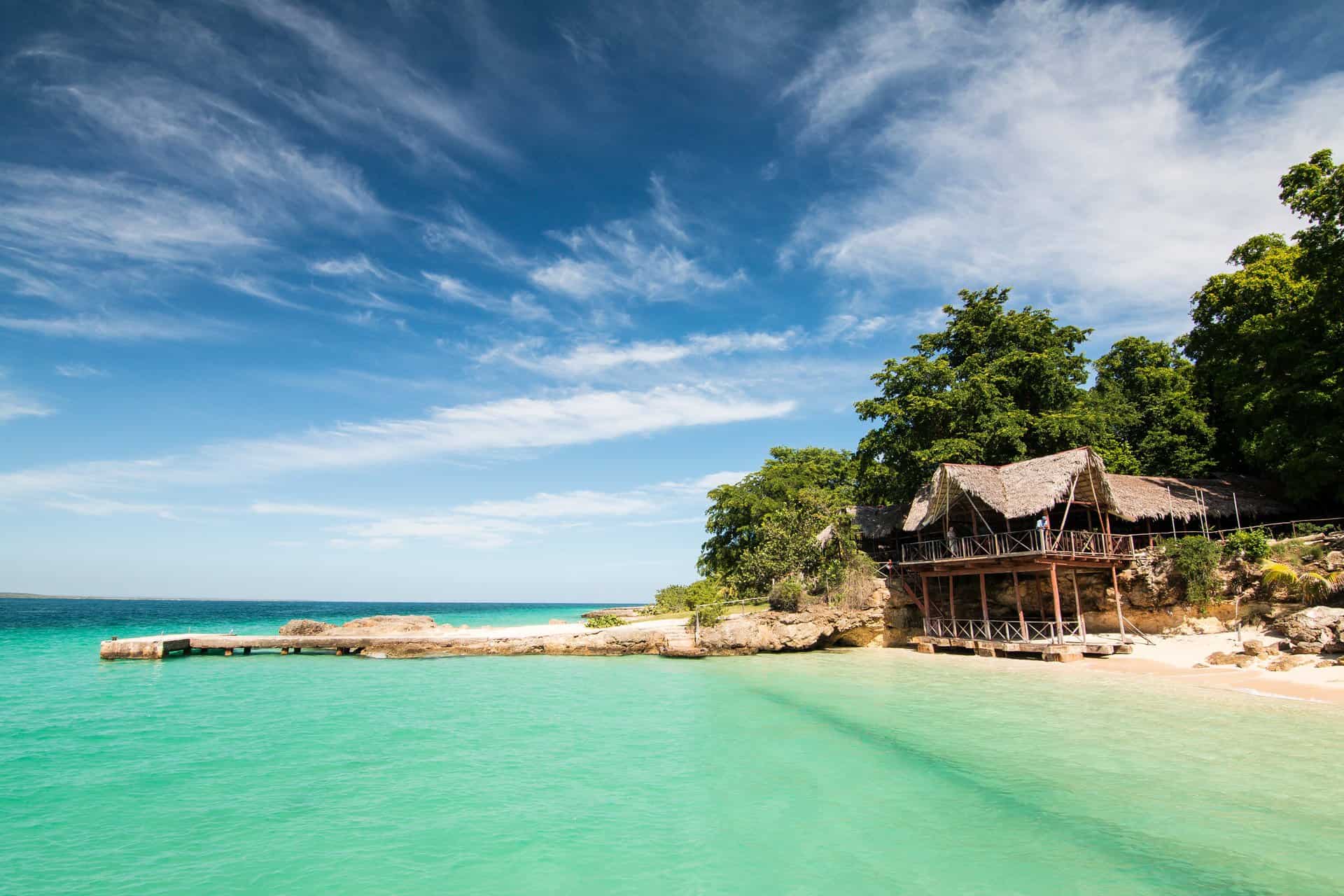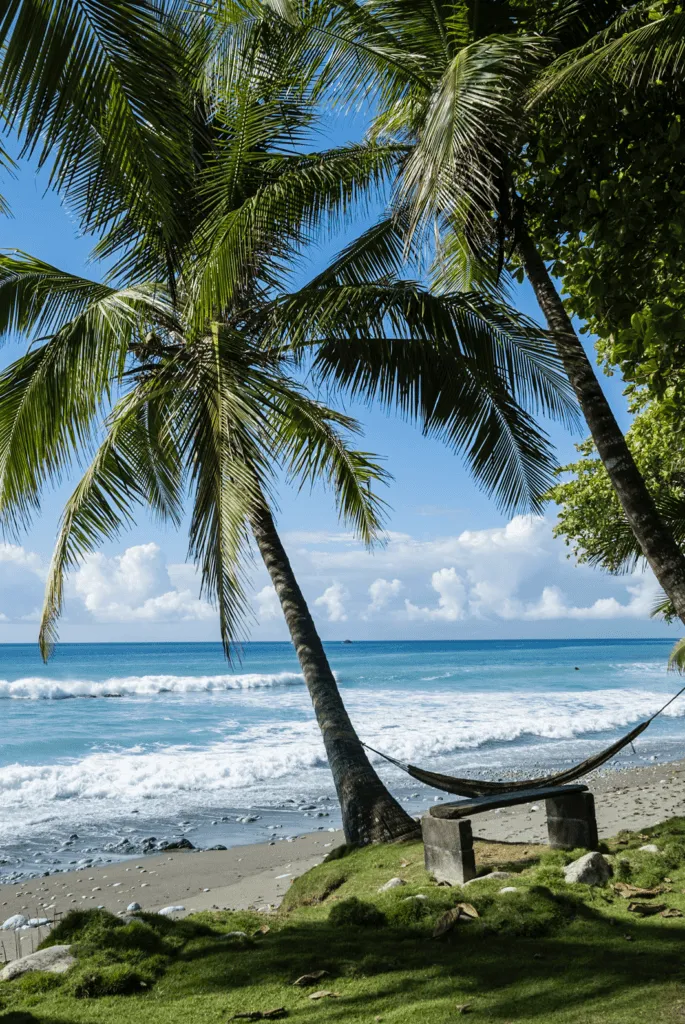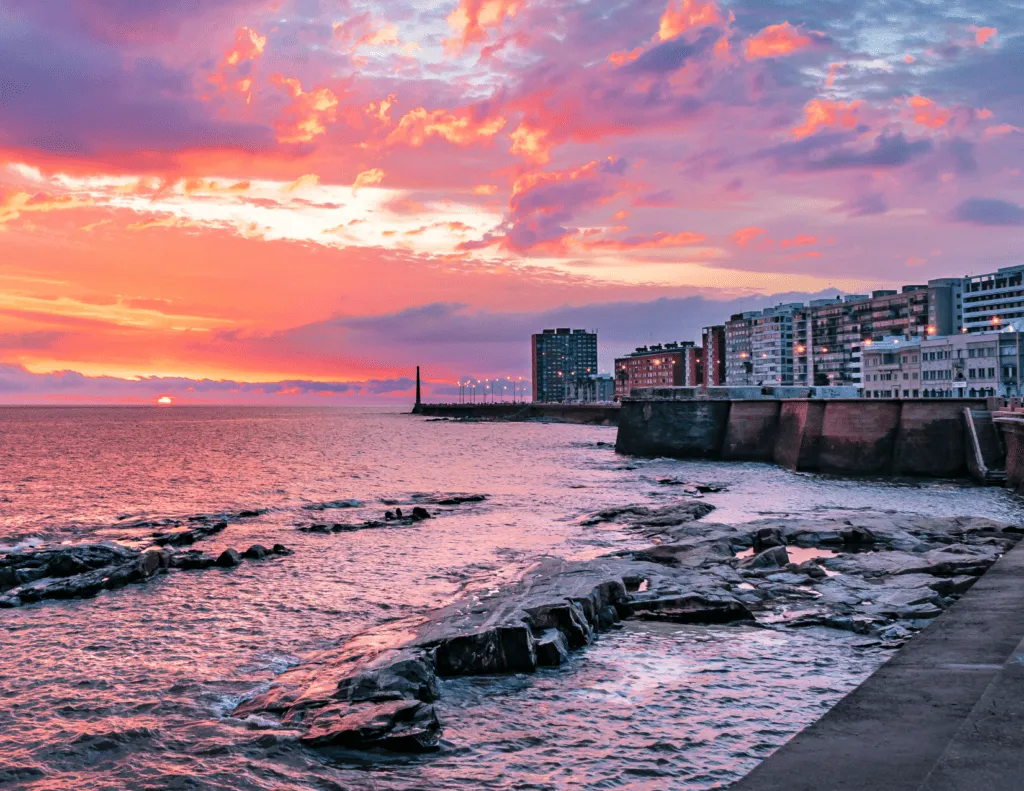
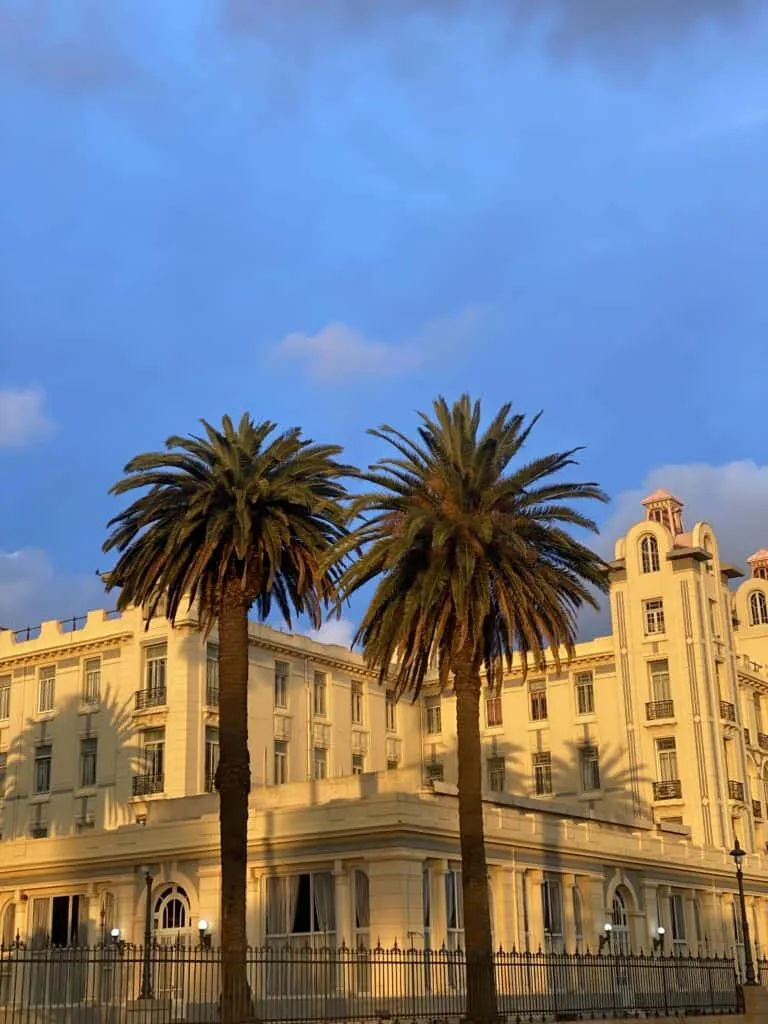
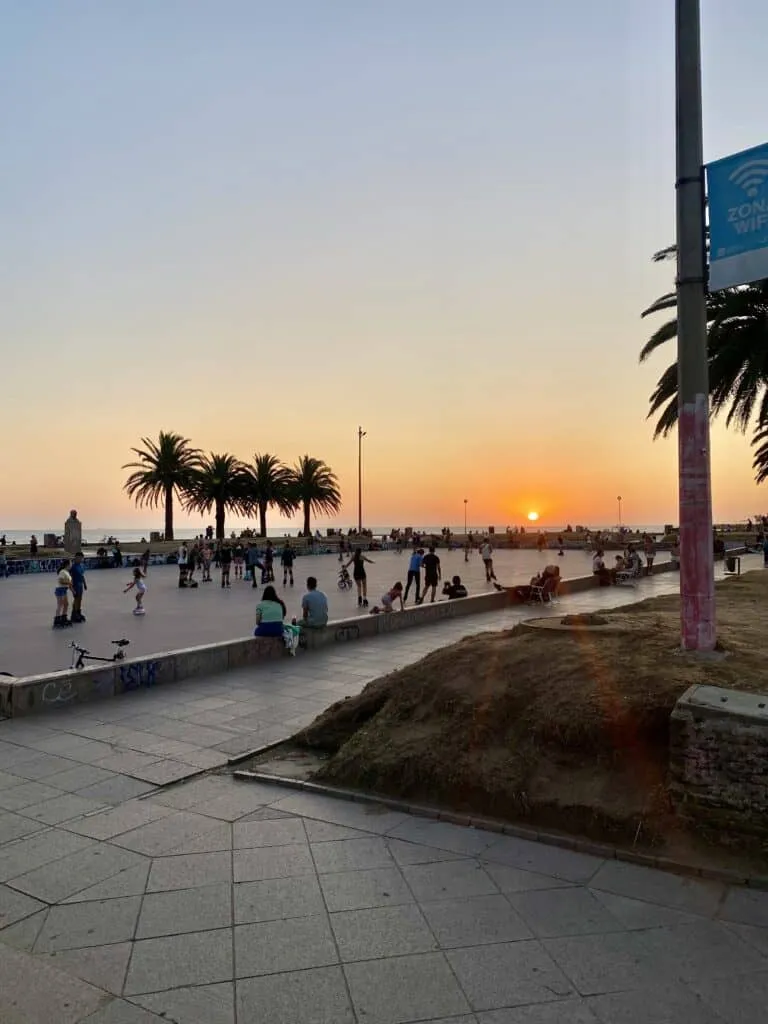
Uruguay’s riverside capital city is not made for tourists, which is exactly what makes it so lovable.
Montevideo’s cafes and restaurants, museums and galleries tend to mirror its people, in that nothing and no one is overly showy. Understated and underrated, mild yet always inviting, what lies behind any given door will often surprise you. While glamour is reserved for the summer months up the coast in Punta del Este, Montevideo offers a yearlong slowness, best reflected by its very residents, who—rarely in a hurry—are more likely to treat you like a vecino than a tourist.
Getting to know the casually cool city of Montevideo for all its charm and intrigue requires a bit of exploring and a fair amount of trust that walking through an unassuming door or striking up conversation with a local will leave you pleasantly surprised.
We’ve opened plenty of doors throughout Montevideo’s diverse barrios and share our favorites with you here to ensure your weekend in the city is not merely a pit stop between Colonia and Jose Ignacio, but a memorable mark on your time in Uruguay.
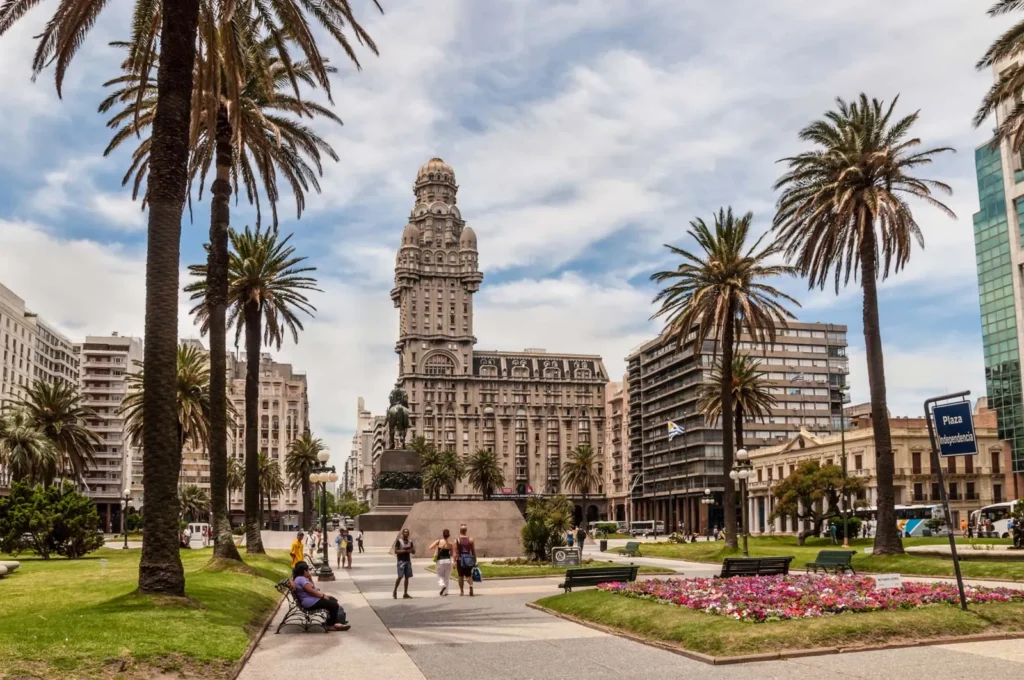
Friday afternoon:
Orientate yourself by starting at Plaza de Independencia: Montevideo’s largest and most central square. Stand beneath the striking Palacio Salvo, once the tallest building in South America. Absorb a bit of history by walking through the last remaining piece of the city’s original citadel and into Ciudad Vieja – the “Old City.”
The heartbeat of this neighborhood is the historic Peatonal Sarandi. A stroll down this pedestrian street is usually accompanied by street music, shop keepers greeting one another, and business professionals taking a long lunch. When walking along Sarandi, be sure to look up. The intricacies of the neighborhood’s Spanish-colonial and well-preserved art deco architecture deserve to be admired.
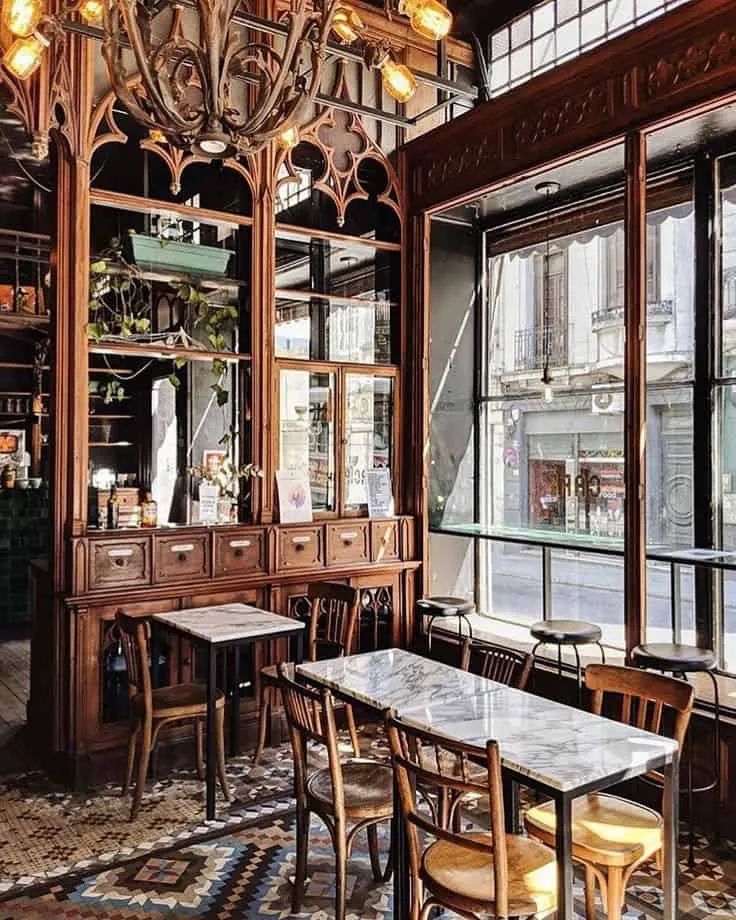
Be sure to visit Museo Andes 1972, which offers a thoughtful homage to the tragedy and survival story of a young Uruguayan rugby team, who suffered a plane crash on their way to Chile roughly fifty years ago. Take your time in the museum then debrief over merienda (a coffee and something sweet that Uruguayans usually enjoy between lunch and dinner) at nearby Café Brasilero, where famous Uruguayan writer Eduardo Galeano was a regular, or La Farmacia, an old pharmacy-turned-café whose mosaic floors and antique furnishings are as rich as their menu items.
Reenergized, continue down Sarandi and appreciate views of the Rio de Plata to your left and to your right. Pop in OTRA Vintage Style Goods at the corner of Sarandi and Colon, whose team is on a mission to keep the traditions of Uruguayan leather craftsmanship alive in their cattle-rich country, where cows famously out number people 3 to 1. They’ll take your measurements and send you a custom jacket.
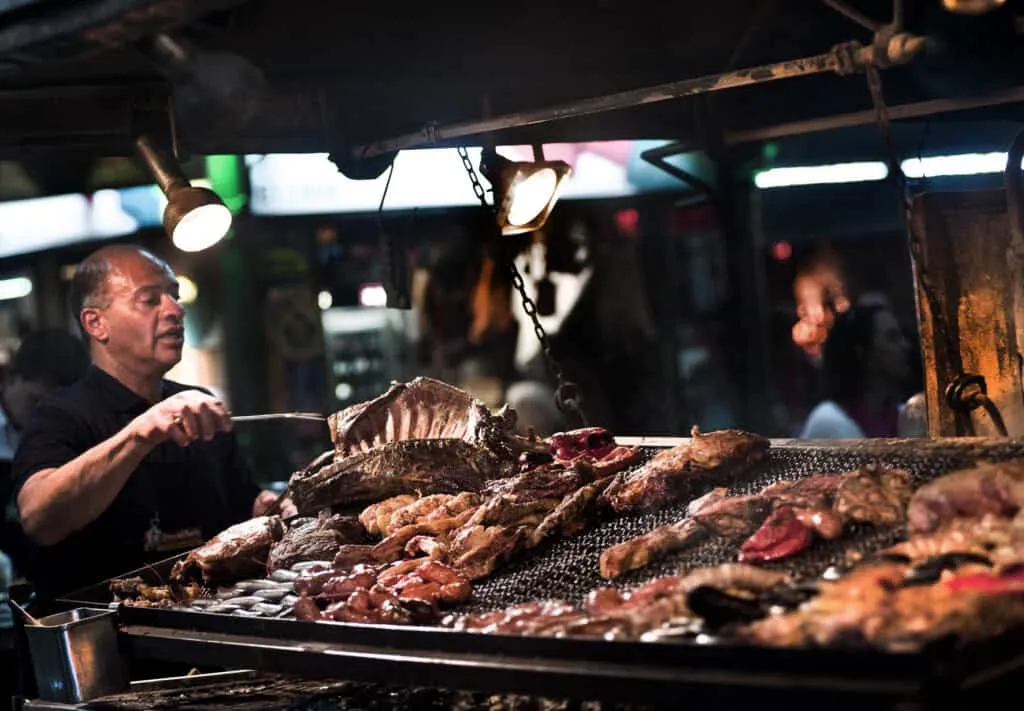
Continue down Perez de Castellano, where the charm of the pedestrian street leads you straight to the famed Mercado del Puerto. Walk through the port market to feel the heat and smell the smoke from its abundant parrillas, which blaze and crackle all day to serve traditional Uruguayan barbecue to visitors and locals alike.
Back track for a cocktail at Capicua, a small-batch gin distillery, and dinner at the city’s best seafood restaurant, Es Mercat. We recommend pairing their paella with a bottle of tannat, Uruguay’s “national grape.”
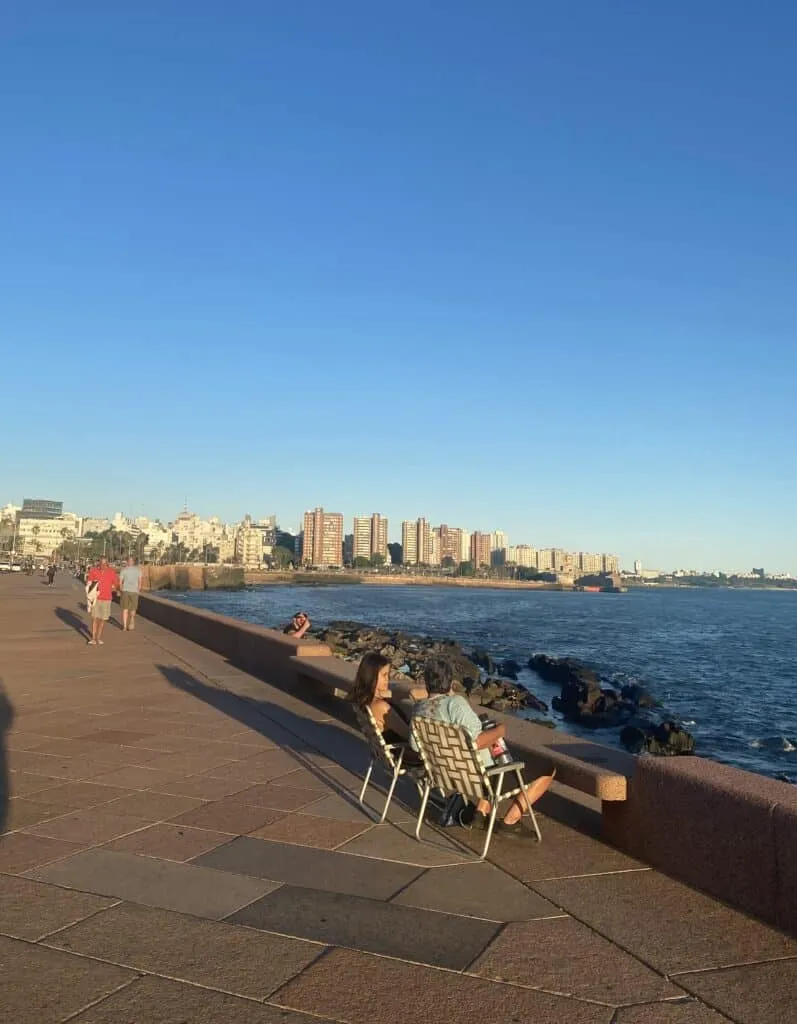
Saturday:
Those passing through Montevideo are less likely to explore beyond the comfort and walkability of Ciudad Vieja, so we recommend starting your day in a different neighborhood. Make your way to Barrio Sur, the birthplace of a special type of Afro-Uruguayan drumbeating and dancing known as candombe and home to Uruguay’s annual carnaval celebration, the longest of its kind in the world. Colorful street art vividly reflects the aesthetics of these traditions.
Wander through Barrio Sur and into Palermo to find Macoco Café, a quiet spot that doubles as a bookstore and is an excellent choice for a hearty breakfast. Depending on the season, take a seat by their wood stove or on the hidden patio beneath the shade of an avocado tree. Walk off breakfast on the Rambla, Montevideo’s riverside promenade that stretches over 22 uninterrupted kilometers along the Rio de Plata. This is the best way to see the skyline and experience the slow and steady lifestyle that Uruguayans hold dear. Watch as locals sip mate, cast their fishing lines right from the river wall, or teach their young ones to ride a bike. Both a sidewalk and a long, narrow park space, the Rambla is one of Montevideo’s precious treasures.
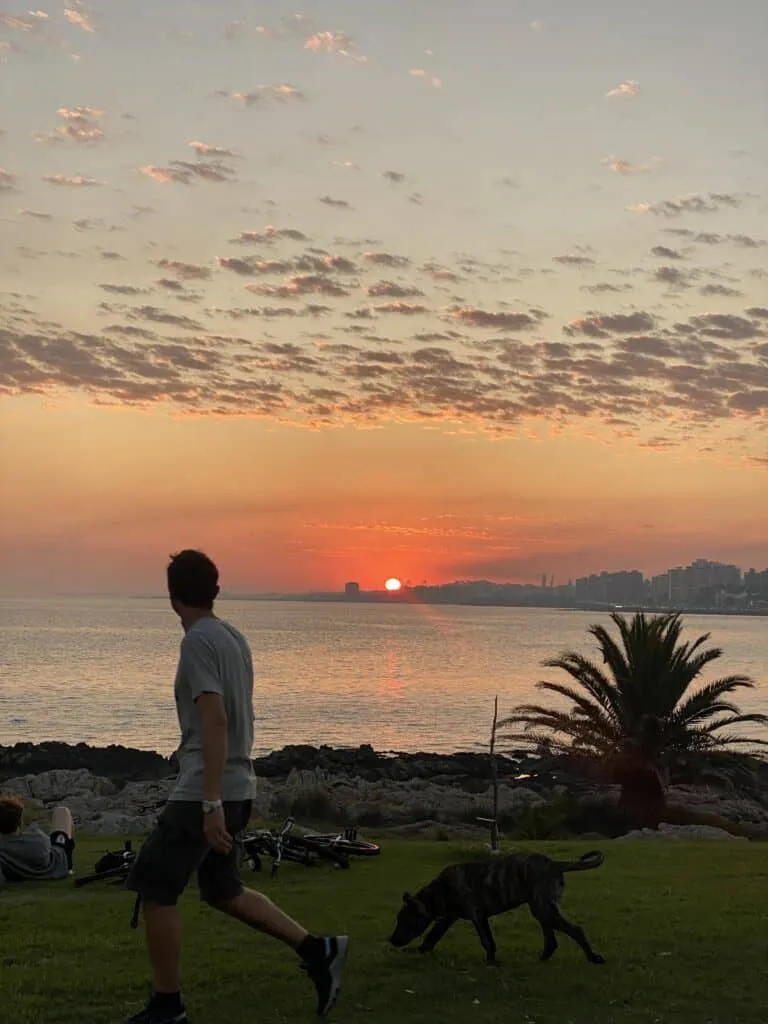
Follow the Rambla to one of city’s ten beaches, Playa Ramirez, or the adjacent Parque Rodo: a laid-back grassy park with a modest boating lake and vintage amusement park rides nearby. Enjoy these pockets of nature with a bag of bizcochos (small, hand-baked, flaky pastries) from a local bakery. Rent a paddle boat in the park or watch windsurfers from the beach. Grab lunch at La Estacada, an off-the-beaten-path restaurant and bar located at the southernmost point of the country, where you can watch fishermen return with a fresh catch over a lunch of chivitos and a liter or two of ice-cold local pilsner. You’ll soon forget you’re even in the city.
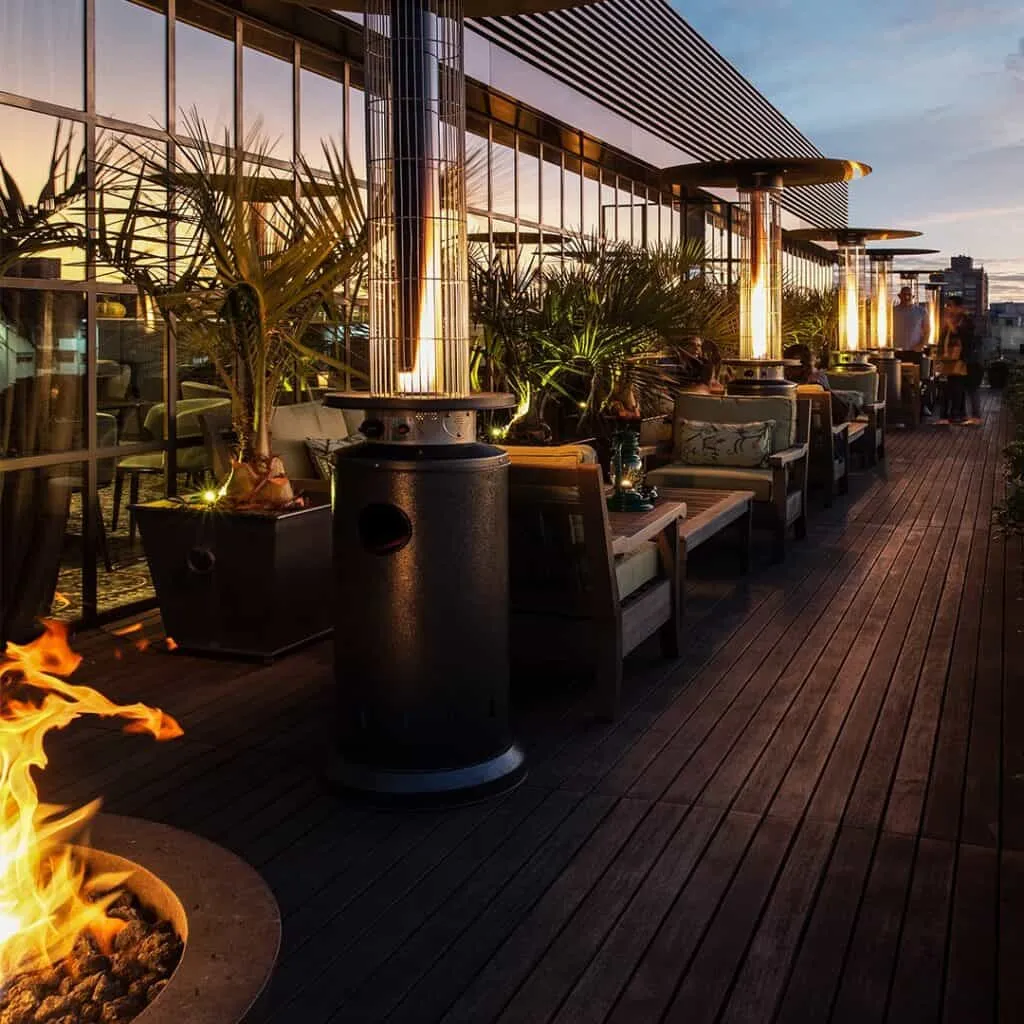
Step back into the downtown scene with an early evening drink at Polo Bamba, a sophisticated bistro bar atop Hotel Montevideo in the upscale Pocitos neighborhood. Enjoy handcrafted cocktails and a view of the city that many haven’t the time to seek.
Save time for a heavy coursed dinner and tango show at Primuseum back in Ciuada Vieja. Servers here are attentive, trilingual, and have orchestrated an unforgettable tango experience that is far from gimmicky. Make a reservation and arrive early to stake out the best spot for your party (hint: in the upstairs loft overlooking the performers).
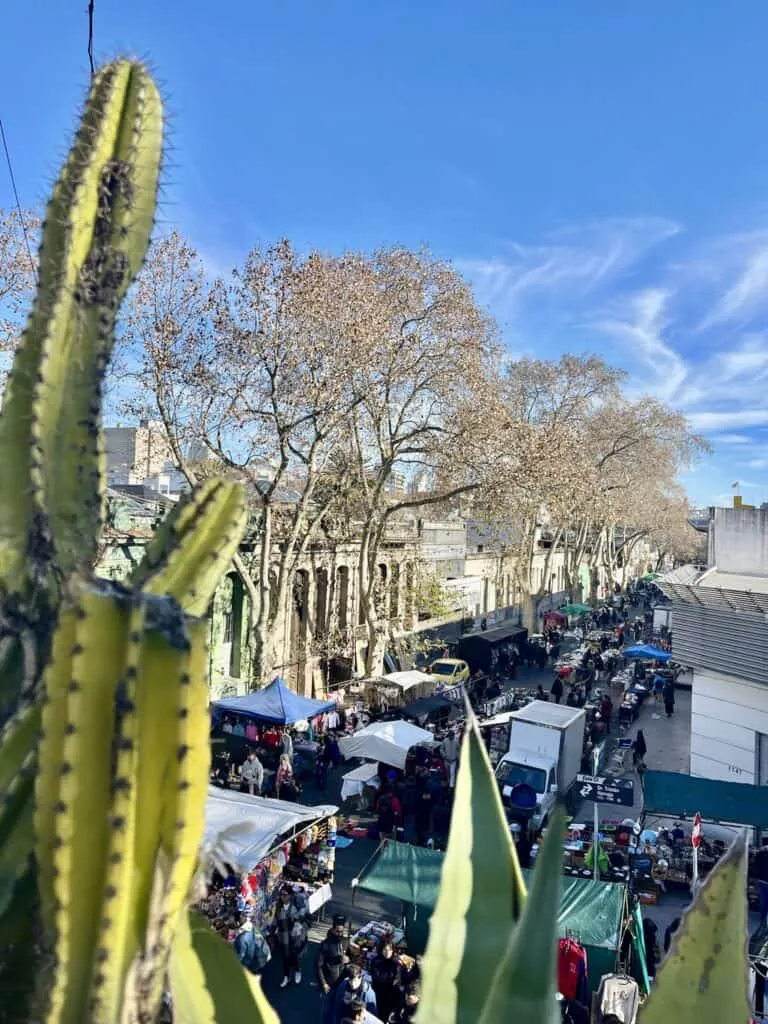
Sunday:
Sundays in Montevideo are all about turning that characteristic Uruguayan slowness one notch slower. Many restaurants and businesses are closed, but there is plenty of shopping, eating, and people watching to be done at the flea market on Tristan Narvaja. For well over 100 years, this open-air market in the center of the city has served as a faithful Sunday tradition for Montevideans seeking anything at a bargain price – from weekly groceries to vintage clothing to a new pet fish. The market is endless. Get lost treasure hunting through its side street vendors or watch the crowds from the rooftop of El Imperio, beer and chorizo al pan in hand. It’s always a party.
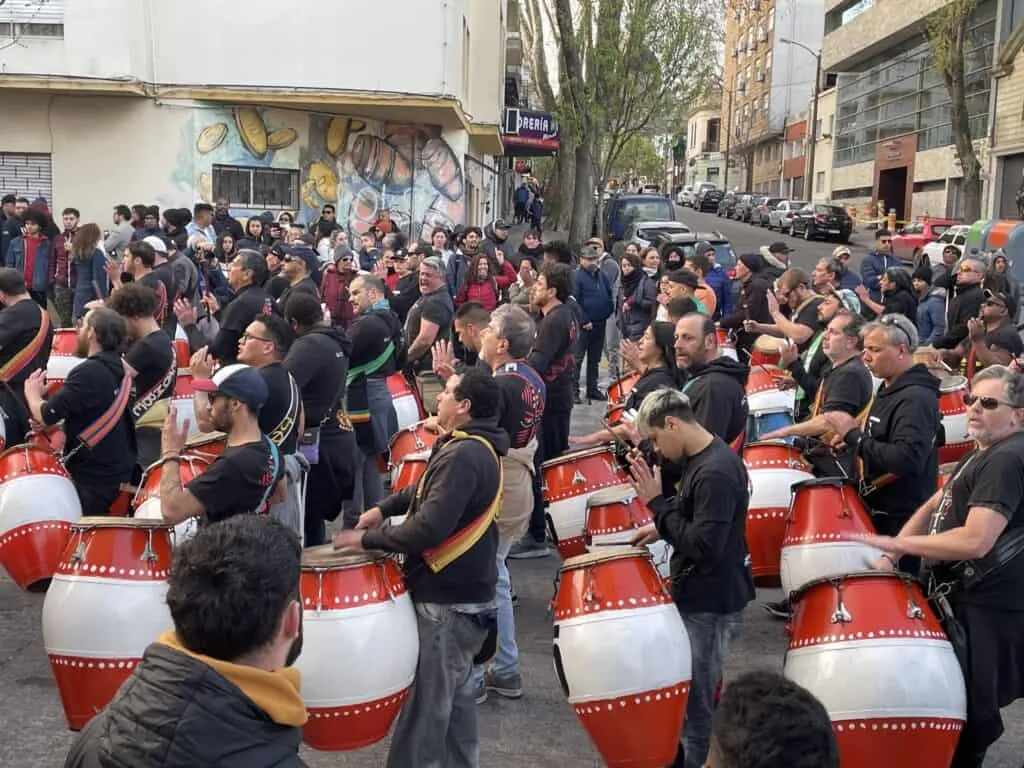
Complete your weekend in Montevideo at El Mingus. This dark, dimly lit jazz bar in the Parque Rodo neighborhood is one of the few restaurants always open for dinner on Sunday. Enjoy their consistently good tapas and cocktails as each member of the evening’s musical act gets lost in their craft. On your way out, keep your ears open for the bounding echoes of candombe drummers rehearsing for next year’s carnaval. Follow the noise until you feel the sound of Montevideo’s history and joy in your chest. Watch from the sidewalk as drummers, dancers, and neighbors make their way in rhythm with one another towards Barrio Sur. And if you’re fortunate enough to cross paths with this uniquely Uruguayan pleasant surprise, feel free to join the parade.
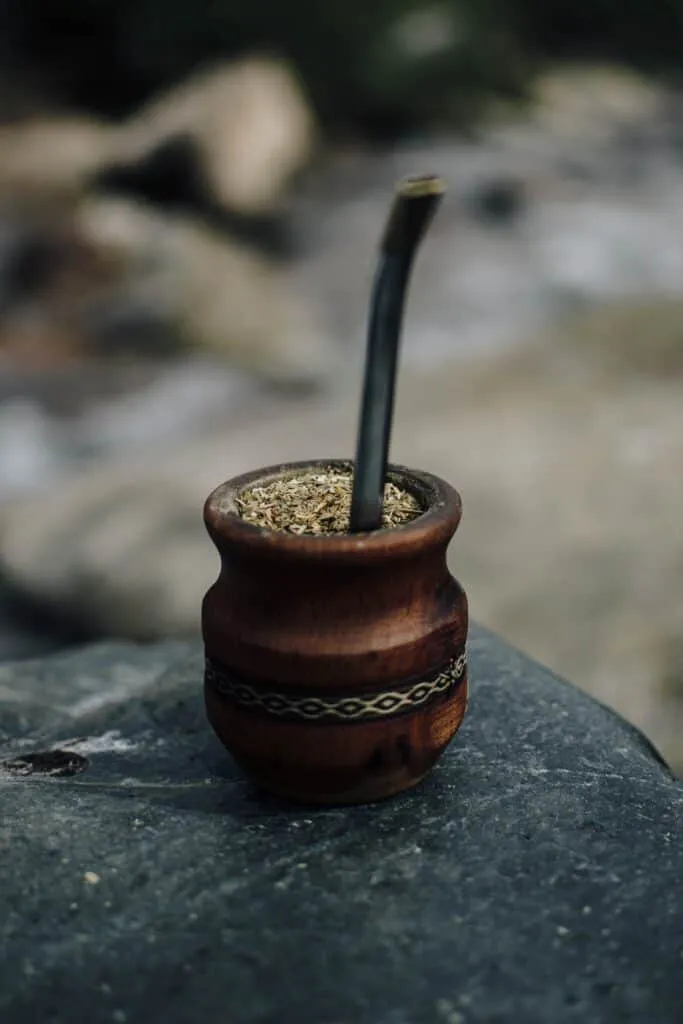
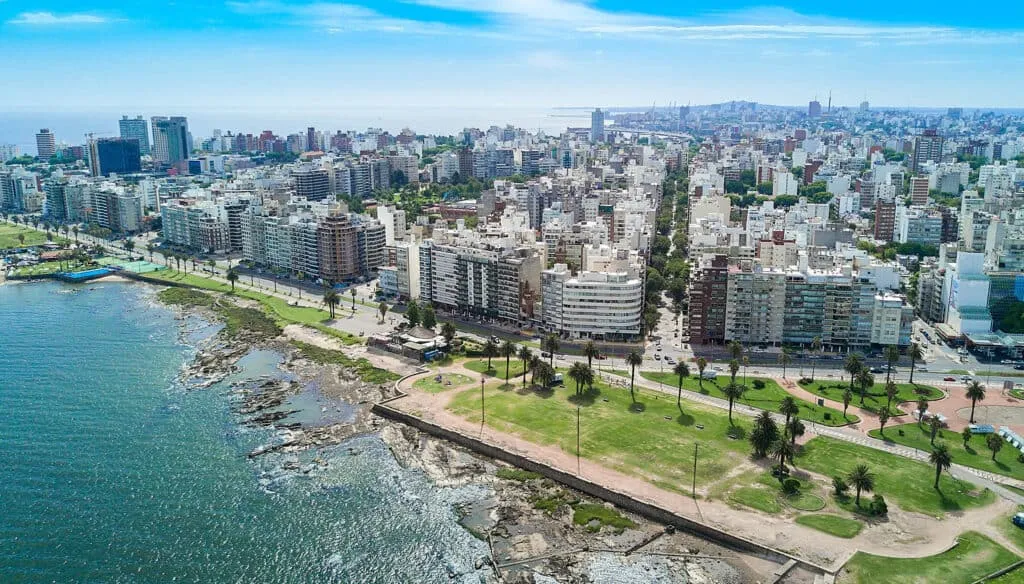
Montevideo is an underrated South American city that beats to its own drum. If you’re curious to experience it for yourself, contact our travel designers for even more insight into Uruguay’s capital city.
Related Stories
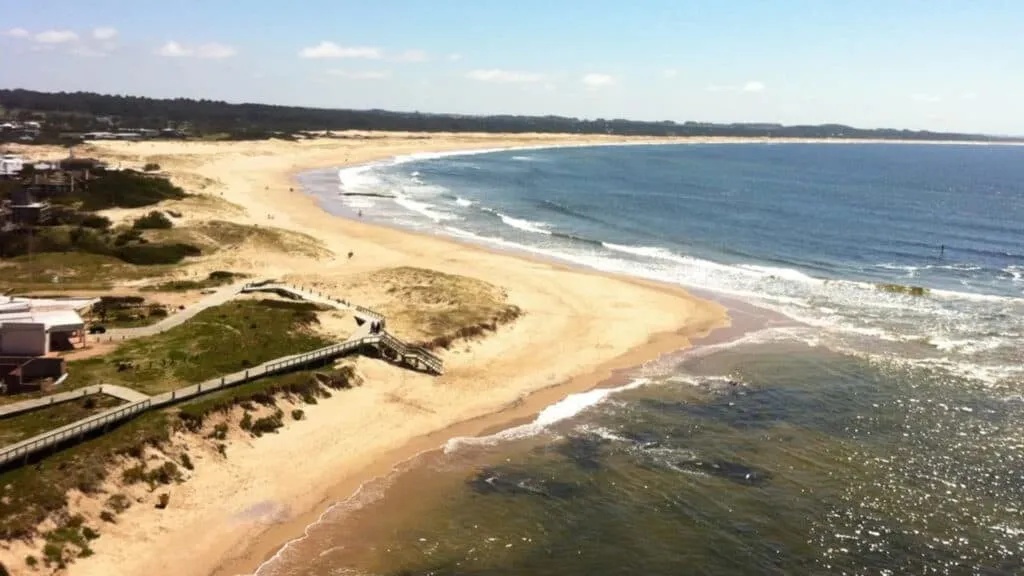
Tarajia Morell’s Inside Track On Uruguay | Plan South America
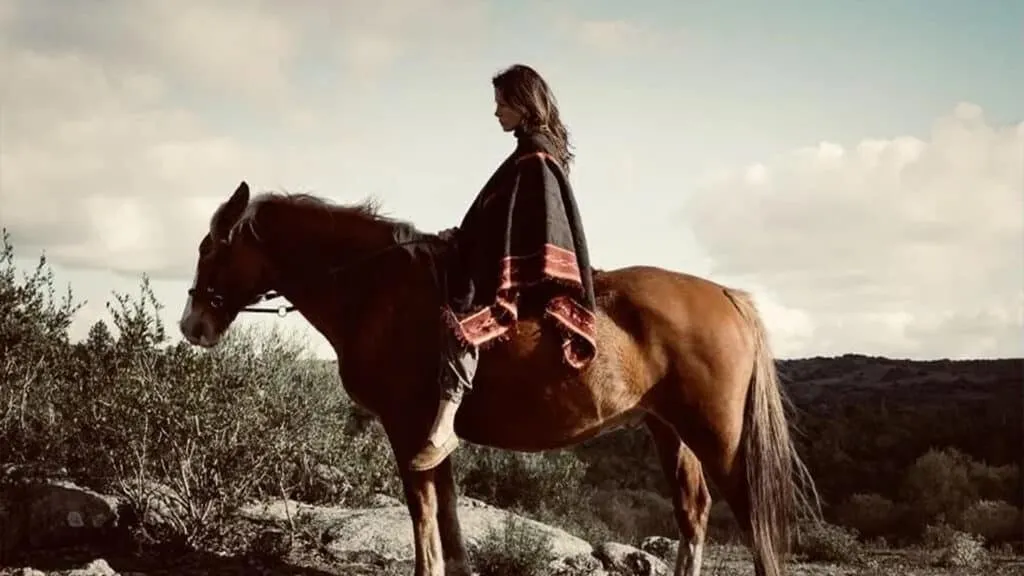
An Interview with Rhona Mitra of The Last Ark Orphanage
@plansouthamerica
